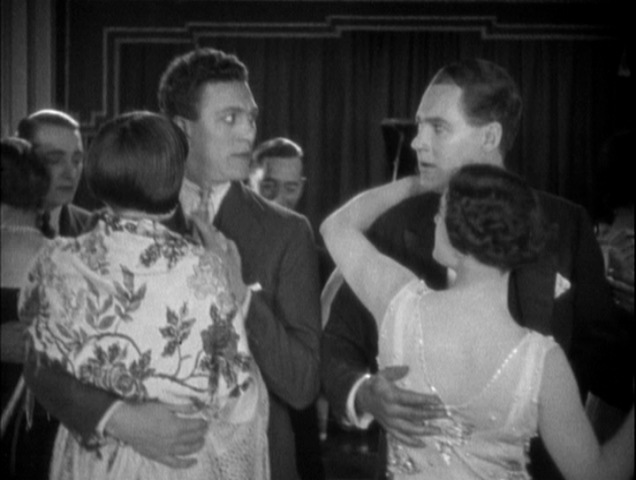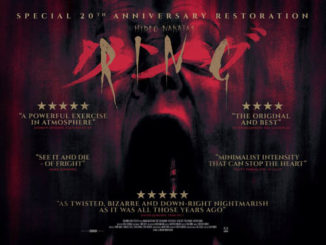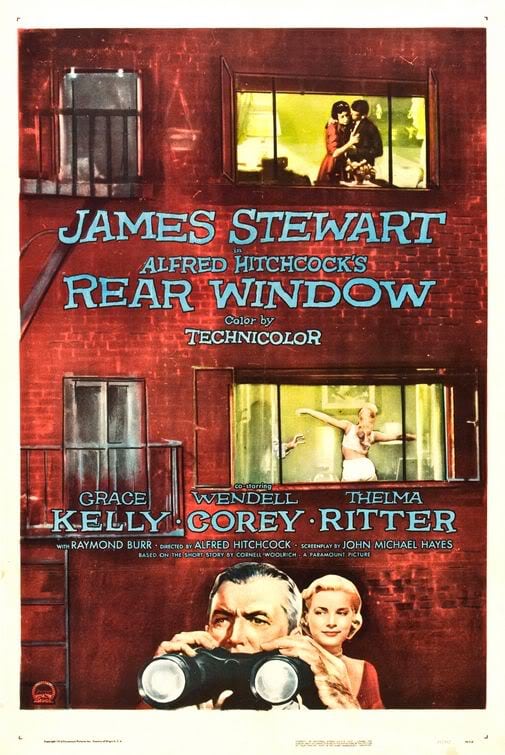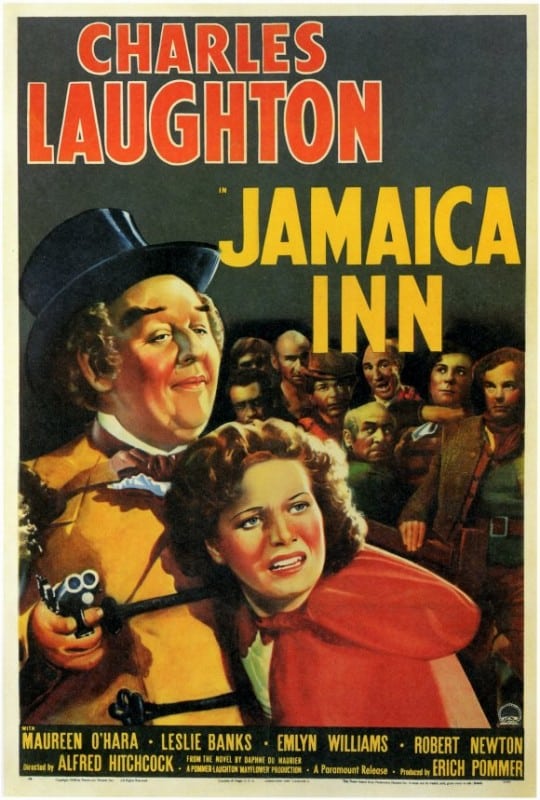The Ring (1927)
Directed by: Alfred Hitchcock
Written by: Alfred Hitchcock, Alma Reville
Starring: Carl Brisson, Forrester Harvey, Ian Hunter, Lillian-Hall Davies
AVAILABLE ON DVD
RUNNING TIME: 89 mins
THE HITCHCOCK CAMEO: none
REVIEWED BY: Dr Lenera, Official HCF Critic
Jack Sander, aka ‘One Round Jack’, works in a carnival show, using the gimmick of being able to knock any challengers out in one round to draw in the crowds. His ambition is to be a professional boxer and thereby earn enough money to marry the cashier Nellie. When, one night, onlooker Bob Corby is reluctantly talked into going a round with Jack, he shows himself to be a professional fighter and knocks him out, much to Jack’s dismay and surprise. Nellie begins to be attracted to Bob, who lets Jack be his sparring partner, while Jack vows to keep on fighting to a level where he can seriously challenge Bob……
Even though there’s that extremely suspenseful tennis match towards the end of Strangers On A Train, the idea of Alfred Hitchcock making a sporting drama sounds odd. Then again, in this early stage in his career his films were mostly assignments rather than projects of his own choosing, and The Ring, much like Rocky, is only superficially about boxing. Both films use the sport as a device to explore their themes. The Ring is essentially a love triangle set in the world of boxing, and on that level it works fairly well, but that’s all there is to it, nothing more. It’s often considered the second ‘proper’ Hitchcock film, though I would personally say Downhill is more deserving of that title. It’s a bit clumsy and I’m not sure whether you’ll supposed to actually like its heroine or not, while there isn’t much actual boxing shown onscreen, but it’s fairly involving and moves at quite a fast pace. Directorially it’s a real tour de force and Hitchcock, who is solely credited with the screenplay though his soon-to-be-wife Alma Reville and the writer of all his previous pictures Elliot Stannard also contributed, is clearly interested in the story even though it’s not what one might think typical Hitchcock and isn’t that great really.
Up to now Hitchcock’s films had all been made for Gainsborough Pictures, but after Easy Virtue he was lured away to British International Pictures with the promise of bigger budgets and more freedom. Gainsborough had not treated his films well including altering some of them and holding up their release. Hitchcock saw his chance to make a straight-forward, commercially viable film on his own terms. Interestingly, he chose not to go for major stars and selected the cast members on suitability, while the headlining actor Carl Brisson was actually a Danish boxer. During the climactic fight set and filmed in the Royal Albert Hall, he actually connected with his screen opponent and knocked him down. The scene was later praised for its supposedly realistic acting. Cinematographer John Cox would go on to photograph Hitchcock’s ten next pictures. Hitchcock seems to have enjoyed making this film and the critics liked it though surprisingly it was not a commercial success. Perhaps its milieu was too different from the norm in silent films, especially British ones.
It’s the environment which is at first the most interesting aspect of the film. It opens with an elaborate montage of eighteen camera dissolves showing aspects of a fairground, then relocates to a small boxing ring in a tent. These early scenes, and one near the end where the pre-fight rituals of boxing are depicted in painstaking detail, have a documentary realism about them, with Hitchcock clearly fascinated by the slight seediness of some of the locales and a working class environment of a kind not often seen in British films of the time. He fills these scenes with interesting details, such as the use of a battered, well-worn title card to indicate the first round of Jack’s opening ‘challenge’ matches, and a brand new one being pulled out when the fight unexpectedly goes to a second round. The actual boxing is limited to the first and last fifteen minutes or so and is hampered by the usual silent movie device of having the action sped up. The final fight is a very well staged one though, helped immeasurably by having one actual boxer up there on the screen, and Hitchcock employs some interesting angles such having the men punch into the camera, but wouldn’t it be so much more effective if it was slowed down? Of course audiences of the time would hardly have been bothered by this.
The central love story is very awkward. Bob is a dislikeable cad but clearly has good intentions when he asks Jack to be his sparring partner, while Nellie is just a floozie who seems happy to kiss him the first time they have ‘gone out’, despite being the girlfriend of Jack. Even when her and Jack get married, she still carries on with Bob, yet cries: “I have to go somewhere where people treat me better” when Jack has found out about her infidelity and they have a row. It seems that we are supposed to feel sympathy for this awful woman but are never really allowed to do so, despite some obvious symbolism such as the bracelet Bob has bought her falling off when her wedding ring is put on. Said bracelet features in a rather erotic little moment when Bob slowly puts it on her, and Lillian Hall-Davies certainly has a kind of tarty sex appeal in the part. The big boxing match is a device to force Nellie to choose between the two men, and being that this was another film I had not seen before, I will admit I did not know how the outcome. Of course if The Ring had been made a few years later Nellie would have had to have been punished for her adultery, but it was made when censors weren’t quite so uptight.
There is some nice class humour in a scene where Jack’s working class mates are in his lavish apartment, don’t know what to sit down on and all produce ashtrays from their pockets. There are several sequences which outstay their welcome, but a lengthy wedding scene includes the ‘best man losing the wedding ring’ gag that must have been old even then. There’s not a huge amount of suspense, but Nellie trying not to show Jack Bob’s bracelet while she is wearing it, and Jack waiting for Nellie to come home while his friends, knowing of her indiscretion, get more and more nervous, do possess some nervous tension. The film as a whole is crammed with clever and economical devices like Bob’s rise being shown by different billboards dissolving into each other, each board having his name higher. Hitchcock uses his trickery to emphasise emotion, like having Jack see Nellie and her face seems to float towards him, or imagining Nellie and Bob kissing at a party as a piano is distorted into bizarre shapes in front of them. Even a nervous challenger to Jack visualises the faces of the men Jack has previously knocked out, while we also really see and feel what it is like to get knocked down in a fight with some fantastic POV shots.
The acting is okay but for me the best performance comes from Forrester Harvey as ‘The Promoter’. He has a wonderfully expressive face but mostly resists the temptation to overact with it. He is constantly given great little things to do and consequently steals much of the film. The DVD I watched of this film has a very lush orchestral soundtrack which sometimes sounds just like Miklos Rozsa, though it’s a bit much some of the time. This is one early Hitchcock which I would call interesting rather than especially good [and watch out for a very callous use of the word ‘‘nigger’’!], there’s something about it that doesn’t quite work, but it’s very watchable and actually I think one of the easiest of Hitchcock’s silent movies for a newcomer to assimilate.
Rating: 

















Be the first to comment